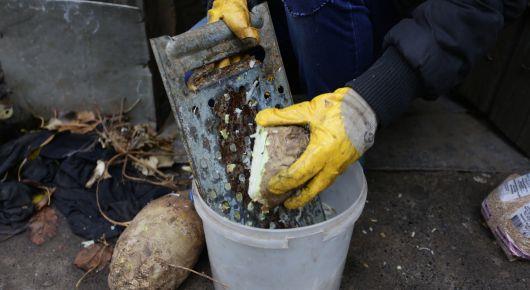FAO helps countries measure climate’s impacts on agriculture

Agriculture is highly vulnerable to weather extremes and disasters.
In developing countries, the agriculture sector absorbs 26 percent of the total economic damage and loss caused by climate-induced disasters, according to one recent FAO study . Smallholder farmers, which provide for more than 70 percent of global food needs, are among the most vulnerable, followed by small and medium-sized agricultural enterprises.
However, it isn’t always easy to understand the extent to which disasters impact agriculture and rural livelihoods. FAO aims to fix that with a new standardized methodology for assessing damage and loss.
The methodology aims to identify holes in information regarding the impact of disasters on agriculture. It’s holistic enough to be applied to disaster events in various country and regional contexts, and it’s precise enough to consider all agricultural subsectors (crops, livestock, aquaculture, fisheries and forestry).
FAO developed the methodology based on countries’ requests, as part of the Sendai Framework for Disaster Risk Reduction and the Sustainable Development Goal monitoring framework. The methodology will be used to collect data and monitor progress towards global targets on resilience, and it constitutes a useful tool for assembling and interpreting existing information to inform risk-related policies, decisions and practices.
To ensure the effective, reliable and standardized global monitoring of disaster damage and loss in agriculture, FAO is collaborating with governments throughout the world – from Latin America and the Caribbean to East Africa and Southeast Asia – in the adoption, operationalization and implementation of this methodology.
A workshop in Kyiv, starting today, will be the first of such events in Eastern Europe and the Caucasus.
It will bring together more than 30 experts and decision makers from Armenia, Azerbaijan, Belarus, Georgia, Republic of Moldova and Ukraine to discuss national systems for the collection and assessment of disaster damage and loss data.
During the workshop, government representatives from statistical offices, disaster risk reduction agencies and ministries of agriculture, fishery and forestry will work with FAO to devise a roadmap for institutionalising national information systems to provide disaster impact data for better informed disaster risk reduction policy and planning in agriculture.
“In addition to learning about the key concepts and application of the methodology, the workshop is an opportunity for experts and decision makers from the participating countries to share information on the major hazards and threats to the agricultural sector in their countries, such as floods, drought, extreme temperatures or animal and plant transboundary pests and diseases, and to share their experience in collecting data on damages and losses caused by disasters of different nature and magnitude,” said Daniela Mangione, who coordinated this workshop and works on FAO disaster risk reduction activities throughout the region.
“This workshop is the first step in a wider capacity development process,” Mangione added. “FAO is committed to engaging in supporting the statistic departments of relevant government institutions to upgrade existing information systems on agriculture to incorporate the collection and analysis of damage and loss data to better inform policies and the allocation of resources.”
FAO’s work on damage and loss assessment in agriculture is nested in a broader corporate priority of increasing the resilience of agriculture-based livelihoods against threats and crises. The FAO approach towards these issues taps into a wide range of technical expertise on various types of shocks, and it considers the specificities of each subsector. It focuses on anticipating, preventing, reducing, adapting to and absorbing risk within the agricultural system.
The methodology has been incorporated into the monitoring framework for the Sustainable Development Goals and will be used to collect data and monitor progress towards global targets on resilience, including indicator C2 of the Sendai Framework and targets 1.5.2 and 11.5.2 of the Sustainable Development Goals.
28 May 2019, Kyiv, Ukraine
